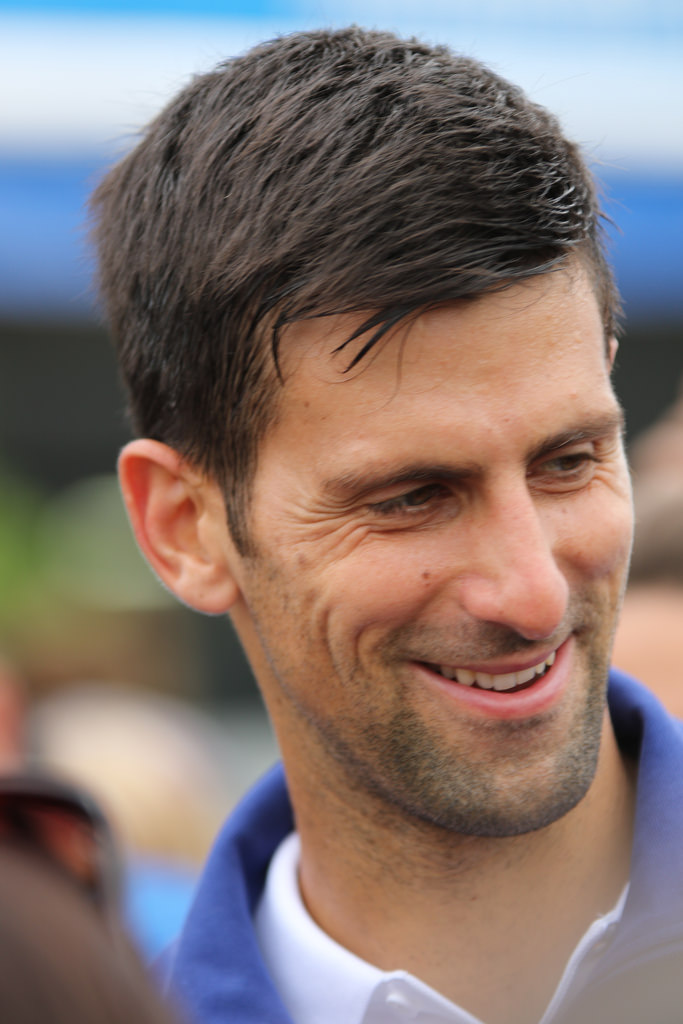Why Was Roger Federer so good at tennis?
Why Roger Federer was So Good at Tennis
The GOAT debate will rage on long after Roger Federer has retired. Is he the greatest player of all time?
Are his two principal rivals Rafael Nadal and Novak Djokovic a better player than he is?
They all have similar numbers of trophies, with Federer behind Nadal, who is on 22, and Djokovic who leads the way with 23 (as of September 2023!)
Nadal’s Grand slam record is somewhat skewed towards the French Open (14 wins) Federer and Djokovic have a slight leaning towards Wimbledon and the Australian Open respectively.
Whatever their respective merits, and why they are or may yet be the GOAT, each player has very distinctive characteristics that make them the player they are, and why they are so good. In this episode, we will focus on Roger Federer.
Federer’s Serve: The Art of Disguise
Federer has won 88.8% of the service games in his career. At the time of writing, he has served 18,633 of them.
His second serve is also a statistical marvel, winning 57% of points from it, higher than anyone else in the last 25 years.
There will be many more service games, and the percentages will likely change very little as his service action is incredibly reliable.
His throw-up has been the subject of many plaudits over the years for its unerring consistency and the fact that he seems to be able to hit almost every service from the same ball location. This is where the magic really is.
Roger’s serve is unreal
Much like a pitcher in baseball or bowler in cricket who hides his/her grip on the ball to surprise the batsman, Federer does so with his throw-up.
He does not give away the destination of his serve and as such keeps opponents just that bit further behind the baseline than is normal.
If you are constantly fearing a wide serve into the deuce court, but cannot read it, you will retreat and retreat until you are unable to take the ball inside the baseline at all.
At which point you are surrendering valuable fractions of a second in terms of catching the sever on his heels. I believe Federer uses his much-vaunted footwork better than anyone else because he creates more time to use it.
And herein lies one advantage his serve gives him;
He makes his opponents hit the ball where he wants, but the beauty of it is that he has that tiny bit more time than normal to prepare as he has kept the returner guessing.
Federer’s Footwork: He Glides
More than one commentator has referred to the way that Federer ‘glides’ around the court.
This is an ability that is common amongst sporting greats, which should be no surprise as almost every sport has footwork at its very core.
As a basic principle, most tennis players can hit the ball up and down in a knock-up for hours.
A lot of advanced club players would be able to hit with tour professionals if the ball were hit back to the same place every time.
Which of course, it is not. The real measure of how good a tennis player is is how he or she hits the ball on the move.
This is not simply because it is important to see how quickly they get to the ball, so they have time to set up, it is about how they set up whilst moving, and how they recover.
His preparation for the next shot has begun before the current one has even finished
Federer is a master at preparation on the move. This is in part aided by his incredibly fast and light footed split step.
The split step is crucial to balance but also in allowing him to take off on either foot at will and begin the preparation to hit the ground stroke.
He is almost constantly up on his toes and if you look closely he takes a mini jump with both feet when he gets back towards the ‘T’.
This jump keeps him light and prevents him from anchoring himself in one position. It is a very specific detail but it is what gives him the extra speed when it comes to preparing for the next shot.
The other thing that he does better than most, is recover from the shot which requires him to move out wide.
He rarely slides like Djokovic or Dimitrov, but instead almost leans his leading leg into a bent position to stop his lateral momentum and allow him to push off back to the ‘T’ again.
He never hits a shot from the side and admires it, or pulls the trigger on a ‘fire and forget’. He is always halting momentum and setting up for the split step return to the middle.
This is not just good for preparation and court control, it is also a huge factor in why he conserves energy in the way he does.
Federer’s Match Management: Keeping Calm Under Pressure
Federer doesn’t seem to sweat like other human beings. He does wipe his brow, but it seems like it is more part of the routine than anything.
He likely does in fact sweat, otherwise, he might get quite ill, but he never seems to be dripping with sweat like Nadal or Roddick.
I believe that his on-court demeanour has developed into the calm, ever-present in the moment because of many years of playing matches at the highest level.
His calmness is his trademark. Which wasn’t always the case.
Calm under pressure - Federer seems to be in a world of his own during matches
The management of his body, his heat, his exertion, and his economy of movement is unique.
He often claims to be tired following a match, but his opponents would never guess, and it must be quite irritating in a close match to see your opponent sitting in the chair without changing their expression after 2-3 hours of play.
Even after losing a punishing rally, he does not seem to bend over and gulp in oxygen.
He does not hang his head in disappointment at losing such a rally. In fact, he often seems to remain in the same headspace whether he is up or down. Only once or twice could you say he has he visibly succumbed to nerves.
Perhaps in the 2009 Wimbledon final, there were also some shaly moments, but the fact we can name them shows how rare they are.
This management of mind and body is something that most humans born with talent have to wrestle with.
The curse of a unique ability is how to retain control over it and master its consistency. How many players of all sports have been described as ‘mercurial’ or as an ‘enigma’, especially in the ultra-stressful arena of individual sports.
Knowing you are in control of what you have at your disposal is something Federer understands better than anyone else.
He never seems to have to ‘dig in’ or find something else, he is just aware that by performing as he can do over a period of time, he will likely win more points than he loses. Simple really.
Roger Federer’s Forehand: A Wand with Venom
There has been more analysis on the Fed forehand than the route Dominc Cummings took to Durham, but there is one key point that is worth pulling out to understand what makes it so good.
The Grip – His grip is a little more open than most and is not as extreme a Western grip as Nadal or Djokovic.
This is what allows him to hit a shot he pretty much invented, the top-spin half-volley forehand from the baseline.
This has turned into an attacking shot, as opposed to a defensive one, which is extraordinary. For most players, it indicates a lack of footwork or being caught off guard.
More often than not for Federer it is part of his mastery of controlling territory on the court.
Federer’s forehand - All in the hips, wrist and follow through
He has created a shot that was previously all risk for little reward, into a shot that creates a huge reward by virtue of the time it takes away from his opponent.
Not only that, he is still on or near the baseline and has not retreated to hit the forehand like the clay court players of the 90s would. He will risk the mishit for control of the ‘T’.
Many players have followed suit and brought this shot into their game, but the extreme Western grip does not allow for clean execution and certainly not for placement like Federer is able to do. It really is a huge advance for the sport, and again, helps with that famed economy of movement.
So, Why was Federer So Good?
There is not enough time in the day to cover in detail all of the reasons why Roger Federer is such a good tennis player.
However these three points I believe do set him apart from his peers, and in a game where each player can hit a ball over and over again with few errors, these details make all the difference.
One day there might be a player who can move, serve and time a forehand as well as Roger Federer, but it will take about 15 years of tournaments to prove it.
Check out more tennis content on our tennis blog!
Check out The Sporting Blog on Social Media for more interesting stuff you didn’t know you needed to know!
And please check out The Sporting Blog Podcast











